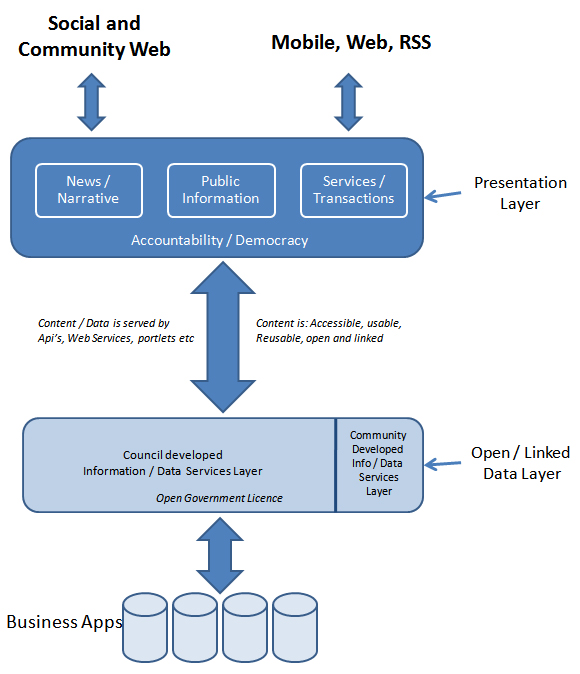In a previous post I mentioned that we’re moving away from creating a traditional web strategy and are moving to a content strategy.
I’ve spent quite a bit of time looking at analytics and understanding our content and in some ways it can be quite depressing to think that we haven’t been measuring the right things in the past and we have been driven by false statistics relating to a website overall instead of more appropriate measures around the value of content itself.
At the same time I’ve been testing the draft objectives against the future direction of the council and our complimentary strategies, such as communications, engagement, information management and localism as well as our revised Strategic Plan.
In that context I’d thought I’d share the draft objectives I’ve pulled together, I’m not convinced these are 100% right, but they are a starting point…
Objectives:
- Improve the quality of engagement with all council content across the web.
- Effectively manage content and increase the ability for all content to be shared and reused by default.
- Reduce duplication and improve the search and access of council content
- Reduce the dependency on a single council website (www.devon.gov.uk) to communicate, engage and provide information.
- Improve the quality of content through evidence and the involvement of stakeholders.
- Ensure content is concise, structured and has a clear purpose.
- Ensure content is relevant and appropriate for the audience and channel.
On the whole I don’t think that these are controversial with the exception of objective 4…this would not have been even considered within a web strategy as essentially that would have been about the “survival” of the website itself. Also this might not sit that well with some people because what that suggests is, don’t focus on our website alone but focus on the power of the web itself and how our content can reach those people who need it…
.So this allows us to focus on the content and acknowledges that people shouldn’t have to visit a council website to access meaningful content about particular services. This also supports the broad approach proposed around digital engagement, in that we should take our conversations to where people are and not expect them to come to us…so our content strategy is about enabling our content to get to the people who want it without expecting them to come to us to get it…simple when you say it, but harder to achieve.
To help me understand how this influences and impacts on our web infrastructure I drew a basic picture of how this would look (see below).
I started to realise that broadly council sites have 4 primary purposes, I maybe wrong so would welcome comments:
1) providing news and narrative about council services and council business.
2) provide public information about our services and how to feedback, complain access information (FOI style).
3) provide access to services, either directly or through signposting.
4) provide democratic accountability and transparency.
So our content was/is supposed to be meeting and supporting these broad areas…on the whole I think we sort of do, but we are not actually able to demonstrate this through metrics or even allow this content to extend beyond our current domain. Also we don’t actually make it easy for people to access the content related to each area easily….
Another thing this made me realise and thanks again to Sarah Lay here, each type of content should/would have different engagement levels, and in order to improve engagement levels on our content we’d need to better understand what an appropriate level of engagement was in each area.
For example; if someone was looking at a piece of content which was a policy document (and didn’t download it) and was only on that page for say 1 minute 30, I think it would be safe to assume that unless we had managed to create the most perfectly written, accessible, plain english version, it is unlikely that someone had actually engaged with it, plus if we don’t allow comments or any kind of interaction we lose the opportunity for people to directly engage with the topic. Obvious but again taking a content approach makes you think more explicitly about this as opposed to building a website which allows for interaction!
So I’m starting to work with our Information management colleagues on better understanding content types and formats as well as starting to look at the stats we have now and what gaps we have around analytics, the next step is to understand engagement levels now and think about what would be appropriate and how we might actually enable and support that.
This is actually quite exciting and is refreshing to step back and think about the value of our content and not the value of our website.
I’m not entirely convinced whether this is actually a formal content strategy approach, but whatever this is, the approach is certainly having a wide range of benefits.
